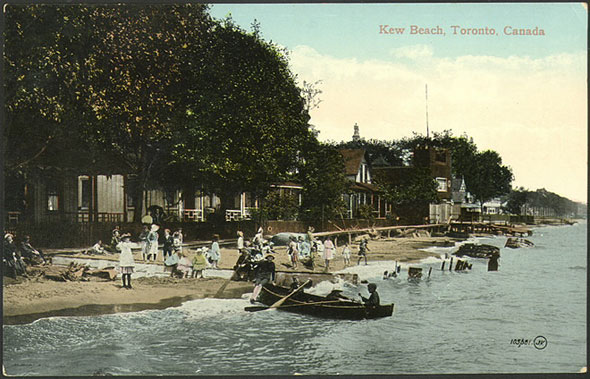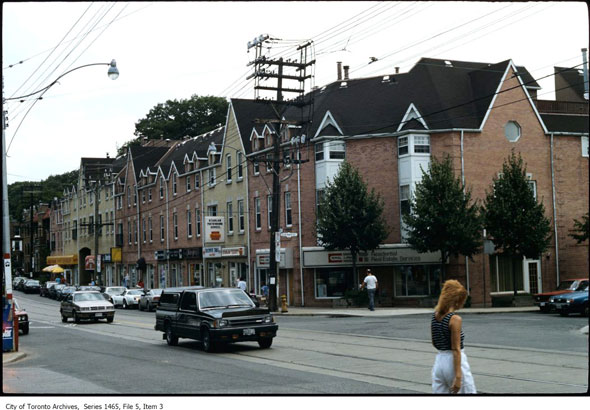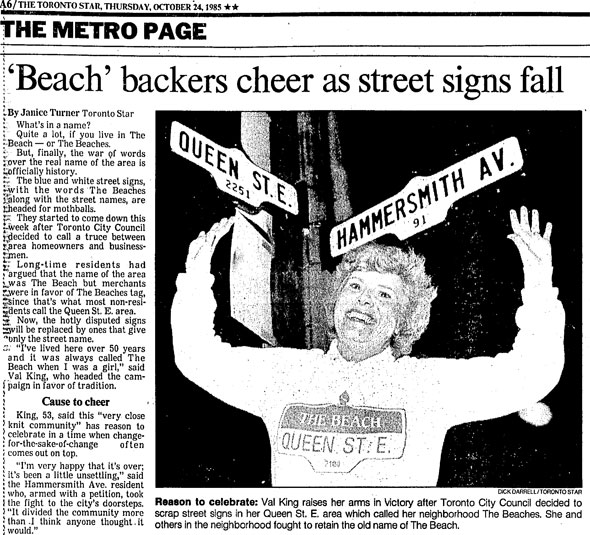
The name of the waterfront neighbourhood in the east end of Toronto with the boardwalk and Kew Gardens? There's a chance you know it as the Beach, or, perhaps more controversially, the Beaches. Historically speaking, the community at the end of the 501 streetcar has long used the singular title, but things got decidedly murky one summer night in 1985.
Late one evening in mid August, Mary Campbell of Benlamond Avenue went to sleep in her Beach home. She woke up in the Beaches. Over night, the city had unscrewed the old acorn-style signs on Queen Street East and installed 14 new ones between Bellefair and Hammersmith Avenues with "The Beaches" written across the top. It wasn't a popular decision.
"It's very obnoxious for people who've lived here for a while to see this," Campbell, who was also the president of the East Toronto Beaches Historical Society, told the Toronto Star. "I've lived here more than 40 years and my parents lived here in the 1920s and its always been the Beach."
She was right: The neighbourhood was often called the Beach, especially by long-time residents, though there were notable exceptions such as the Beaches Branch Library, which opened in 1916. The Beaches, however, made perfect sense to outsiders. The neighbourhood was home to Woodbine, Kew, and Balmy beaches even if it was a single continuous stretch of sand.

But the sign switch was indicative of a bigger change in the community; a sudden influx of outsiders were changing the feel of the neighbourhood.
M. Jane Fairburn in her book Along the Shore: Rediscovering Toronto's Waterfront Heritage, says that in the 1960s it was virtually impossible to find a business in the Beach that sold alcohol, with the exception of the Orchard Park Tavern across from Greenwood Raceway.
As Robert Fulford wrote in Accidental City, "the 1970s were a kind of cultural nightmare" for the Beach's old guard. "It was like going to sleep in your home town and waking up in a garish Hollywood movie set."
On the signs, the Beaches Business Association and the local BIA weren't to be swayed. They had designed and paid $1,400 for the signs and even consulted with the public, they said.
"We knew we wouldn't be able to please everybody, so we took a long dispassionate look at the situation," Arthur Salvatore, an executive member, told The Star. "Historically, this area encompasses more than one beach. The plural of beach is beaches. The media and anyone living outside the area knows it as the Beaches. And the majority of people who have moved here recently call it by that name," he said.
Locals said the BIA didn't have the right to make alterations to the street and insisted Beaches was a shunned commercial and real estate term. An error by the city had allowed the signs to be installed without the consent of local aldermen, Dorothy Thomas and Tom Jakobek.
"I fed up with everything that's happened to the Beach," Shelley Shields, another 40-year resident, told The Star. "I'm tired of people walking in and changing this place."

The unpopular signs didn't last much more than a month. In October 1985, the war of words came to an end with the return of acorn-style signs displaying only the name of the street, but still the Beaches name persisted.
In 2006, the Beaches BIA (still plural) again tried its luck with new street signs, these ones labelling the area "The Beach," resulting in an outcry from hardcore pluralists. A public vote to settle the interminable matter one way or the other resulted in a narrow win for the singularists and the BIA dropped the two controversial letters from the end of its name.
So where do we stand today? I polled several local news outlets for their style guidelines regarding the Beach, or Beaches. The Toronto Star style committee head said, definitively, it's the Beach at 1 Yonge Street. The Globe and Mail, which publishes its style guide online, says "we do not use the singular ... but there is no need to change quotes from neighbourhood old-timers who do so."
Ron Wadden, the Toronto editor of the National Post, says his paper is torn and frequently ends up using both names, though he personally prefers Beaches.
The government says it's plural tool; MP Matthew Kellway, MPP Michael Prue, and councillors Janet Davis and Mary-Margaret McMahon all represent Beaches-East York.
The street signs still say "The Beach."
Please share this
No comments:
Post a Comment